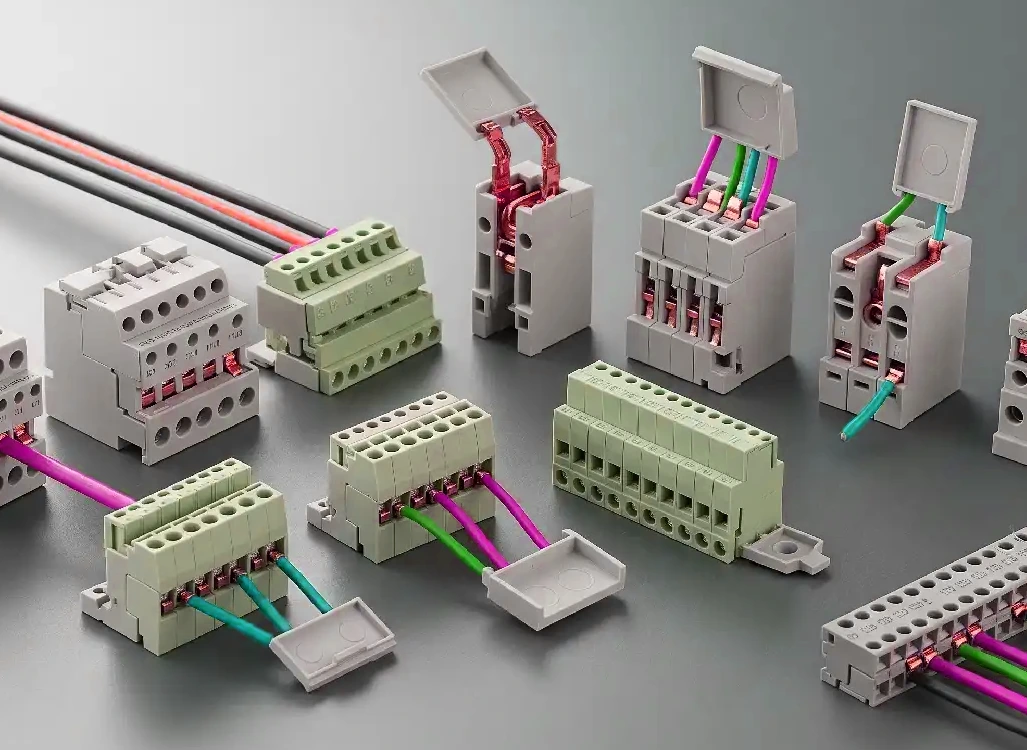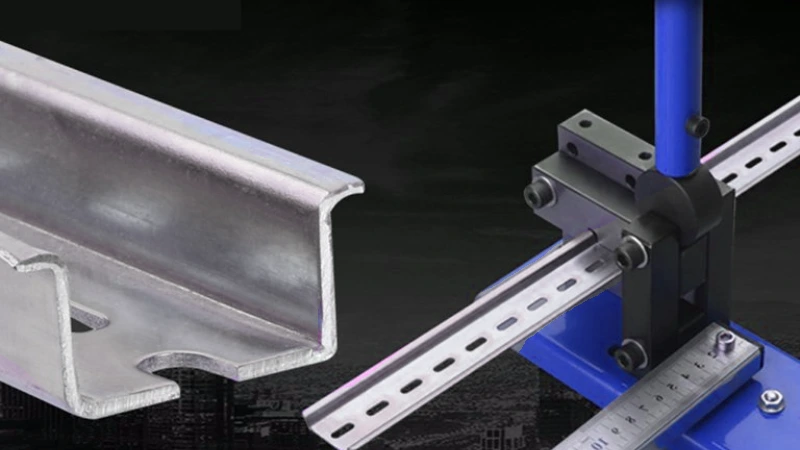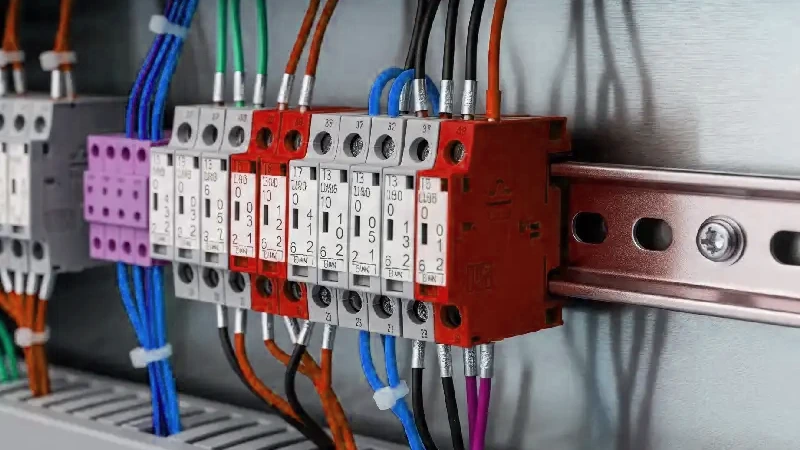If you’re wondering what is a din rail mount, it’s a standard metal rail that lets you snap electrical equipment—like circuit breakers or relays—into control cabinets or panels. DIN rail mounting keeps your electrical components organized, safe, and easy to access. Here’s why you’ll see din rails everywhere:
- DIN rails standardize mounting, making electrical equipment from different brands fit together.
- They keep everything neat and easy to reach.
- Snap-on mounting speeds up installation and maintenance.
- DIN rails hold parts securely, reducing the risk of short circuits.
- You get better layout, space savings, and easier troubleshooting.
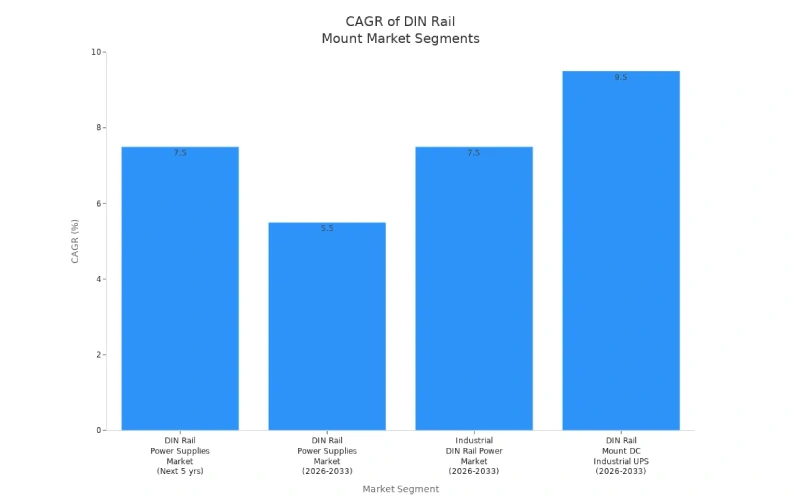
You can trust Linkewell for reliable din rail mounting solutions that help you organize your electrical equipment and meet global standards.
Din Rail Mount Key Takeaways
- DIN rail mounts are metal rails that let you quickly snap electrical devices into place, keeping panels neat and organized.
- Using DIN rails makes installation and maintenance faster, safer, and more flexible by allowing easy device swapping without tools.
- DIN rails support many devices like circuit breakers and relays, and they help save space while improving safety and airflow in electrical panels.
What Is a DIN Rail Mount
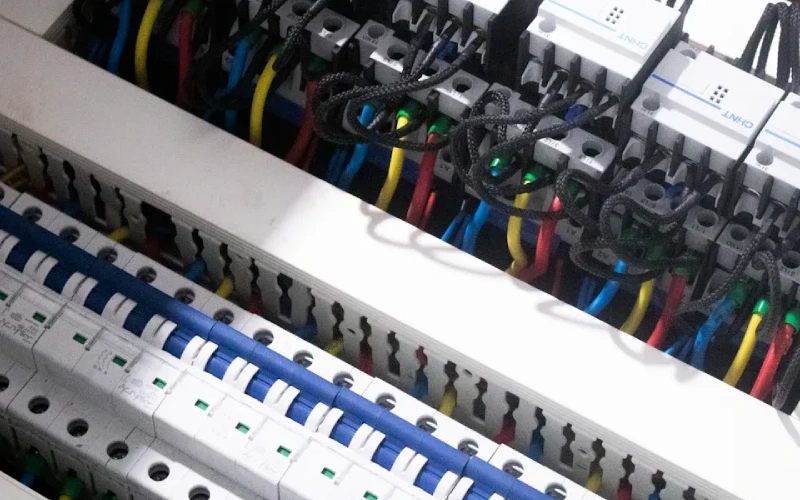
DIN Rail Mount Definition
If you want to know what is a din rail mount, you’re not alone. This question pops up a lot when you start working with electrical panels or control cabinets. A din rail mount is a standard metal rail that lets you snap electrical devices—like circuit breakers, relays, or power supplies—right into place inside an enclosure. You don’t need extra brackets or complicated hardware. The din rail system keeps everything organized, safe, and easy to access.
Here’s what makes a din rail mount special:
- The din rail is a metal strip, usually made from zinc-plated steel, stainless steel, or aluminum.
- It follows strict international standards, like IEC 60715, so you can use devices from different brands on the same rail.
- The most common type is the 35 mm wide “top hat” rail, but you’ll also see 15 mm mini rails and 32 mm C-section or G-section rails.
- The din rail serves as a mechanical support for mounting electrical equipment, but it doesn’t carry current like a busbar.
- You’ll find din rails in almost every modern electrical cabinet, from factories to renewable energy setups.
Tip: Linkewell’s IEC 60715 certified din rails make it easy to build panels that meet global standards. You get reliable quality and compatibility with all major electrical brands.
How a DIN Rail Mount Works
So, how does a din rail mount actually work? The answer is simple, but the benefits are huge. When you use a din rail mounting system, you snap your electrical components onto the rail using built-in clips or latches. This method saves you time and keeps your setup neat.
Here’s how the process goes:
- You install the din rail inside your control cabinet or panel.
- Each electrical device—like a terminal block, relay, or PLC—comes with a special clip designed for the din rail.
- You line up the device and snap it onto the rail. No screws or drilling needed.
- The rail holds the device firmly in place, even if the panel vibrates or moves.
- If you need to change something, you just unclip the device and swap it out. No mess, no hassle.
The din rail system gives you a few big advantages:
- You can mount devices vertically or horizontally, making the most of your panel space.
- The standard mounting system keeps everything compatible, so you can mix and match brands.
- You get better airflow and less clutter, which helps your electrical equipment last longer.
- Maintenance is a breeze. You can reach every part without digging through tangled wires.
Here’s a quick look at the main standards that keep everything compatible:
| Standard | Rail Type | Dimensions (mm) | Description |
|---|---|---|---|
| IEC/EN 60715 | Top Hat (TH) | 35 x 7.5 / 15 | Most common, universal fit |
| EN 50022 | Top Hat | 35 x 7.5 | Widely used in Europe |
| EN 50035 | C Section | 32 x 15 | For heavier components |
When you choose Linkewell’s din rails, you get products that meet these standards. That means you can trust your electrical setup to be safe, organized, and ready for anything.
DIN Rail Types and Applications
Main DIN Rail Types
You’ll find several types of din rail in the market, each designed for different equipment and environments. Here’s a quick table to help you compare the main types:
| DIN Rail Type | Description and Typical Use |
|---|---|
| Top Hat (TS35) | The most common din rail. It has a 35 mm width and works with most industrial equipment. |
| Mini Top Hat (TS15) | Smaller at 15 mm wide. Perfect for compact spaces and lighter electrical equipment. |
| C-Section (C20–C50) | Stronger rails for heavy-duty applications. You’ll see these where high strength is needed. |
| G-Section | Asymmetric profile. Handles heavier loads and high-power components in tough conditions. |
Linkewell offers all these din rail types, so you can match the right rail to your equipment and enclosure. The Top Hat rail fits most control panels, while the C-Section and G-Section rails give extra support for larger or heavier devices. Mini Top Hat rails help you save space in tight cabinets.
Where DIN Rails Are Used
You’ll spot din rail systems in almost every modern electrical setup. They keep your equipment organized and make upgrades easy. Here are some key applications of din rails:
- Control panels in factories and commercial buildings
- Industrial automation systems, including robotics and PLCs
- Power distribution cabinets for energy management
- Data centers for power monitoring and cooling control
- Renewable energy setups, like solar and wind power stations
These applications rely on din rail for fast installation and safe, modular layouts. You can mount circuit breakers, relays, and other electrical equipment quickly. Linkewell’s din rail solutions meet international standards, so you get reliable performance in any industry. Whether you work in energy, automation, or building management, din rails help you build efficient and scalable systems.
Tip: If you want to keep your electrical equipment safe and organized, choose the right din rail for your application. Linkewell can help you select and customize rails for any project.
DIN Rail Mount Benefits
Organization and Safety
When you use a din rail in your electrical panel, you get a neat and organized setup. The din rail system lets you mount circuit breakers, relays, and terminal blocks in straight lines. This makes it easy to spot each device and trace wires. You can quickly find and fix problems, which saves you time and reduces downtime.
- Din rails keep wiring tidy and accessible, so you avoid tangled cables.
- The standardized design means you can use parts from different brands without worrying about fit.
- Secure mounting prevents devices from moving or disconnecting, even if your panel vibrates.
- Proper grounding of the din rail helps protect you from electrical shocks and keeps your system safe.
- You can label each component, making maintenance and troubleshooting much easier.
Using a din rail system also improves airflow inside your cabinet. Better airflow means your electrical devices stay cooler and last longer. You get peace of mind knowing your setup meets global safety and reliability standards.
Easy Installation and Maintenance
One of the biggest benefits of using din rail systems is how fast and simple installation becomes. You just snap devices onto the rail—no screws or drilling needed. This saves you a lot of time, especially if you need to upgrade or expand your panel later.
- The modular design lets you add, remove, or rearrange components without rewiring the whole system.
- You can mount devices vertically or horizontally, which helps you save space in tight enclosures.
- Standardized rails like those from Linkewell ensure you meet international electrical standards.
- Regular checks and clear labeling make maintenance safe and efficient.
If you want a flexible, scalable, and cost-effective solution, din rails are the way to go. The benefits of using din rail systems include easier upgrades, safer operation, and lower installation costs. You get a professional look and reliable performance every time.
Components for DIN Rail
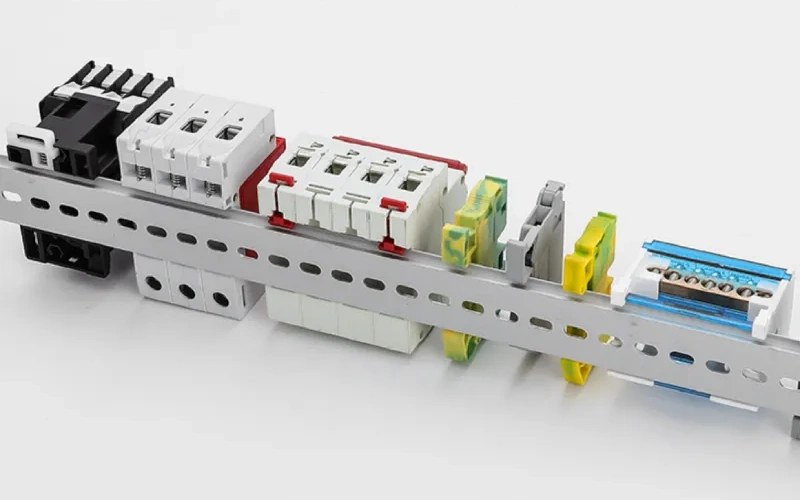
Common Devices Mounted
When you open a control panel, you’ll see a variety of equipment snapped onto the din rail. These components commonly mounted on din rails help you organize your setup and make maintenance simple. Here’s a quick look at what you’ll usually find:
| Electrical Device/Component | Description |
|---|---|
| Circuit Breakers | Protect circuits from overcurrent and faults by interrupting electricity flow. |
| Terminal Blocks | Provide secure and organized wire connections for efficient wiring. |
| Relays | Control high-power circuits using low-power signals. |
| Programmable Logic Controllers (PLCs) | Automate industrial processes and machinery control. |
| Motor Controllers | Manage electric motor operation for safe and precise control. |
| Contactors | Electrically controlled switches for power circuits. |
| Transformers | Transfer electrical energy between circuits, often for voltage conversion. |
| Power Supplies | Deliver stable power to devices mounted on the rail. |
| Automation Controllers | Control and automate industrial equipment and processes. |
| Actuators | Convert electrical signals into movement in automation systems. |
You’ll notice that these components commonly mounted on din rails cover everything from basic circuit protection to advanced automation. This flexibility makes din rails a favorite in many applications.
Linkewell DIN Rail Solutions
You want your electrical equipment to fit perfectly and work reliably. Linkewell designs din rail solutions that support a wide range of equipment and applications. You can choose from Top Hat, C-type, G-type, and Mini Top Hat rails, all made to international standards like IEC 60715. Linkewell’s rails handle everything from circuit breakers to PLCs, so you can build panels for any industry.
Need something special? Linkewell offers cut-to-length rails, custom profiles, and even private labeling. You can get rails with zinc-plated or stainless steel finishes for extra durability. If you’re a distributor, you’ll appreciate the flexible order sizes and packaging options. Linkewell’s technical team helps you confirm drawings and select the right rail for your equipment, making installation fast and easy.
Linkewell’s products meet CE, RoHS, and UL94-V0 standards, so you know your setup is safe and reliable. With strong quality control and a variety of terminal block configurations, you can trust Linkewell to support your electrical projects—no matter how complex your applications or equipment needs.
You now know that din rails give you a simple way to mount and organize devices inside enclosures. These standardized metal rails support many din applications, from automation to energy systems. You get secure, flexible setups every time. For reliable din solutions, Linkewell has you covered.
FAQ
What devices can you mount on a DIN rail?
You can snap on circuit breakers, relays, terminal blocks, power supplies, and PLCs. Most control panel components fit DIN rails.
What is the maximum load of a standard DIN rail mount?
Most standard DIN rail mounts support up to 10–20 kg of vertical load depending on the clip design and rail material. Always check the datasheet for exact specifications.
Can any device fit any brand of DIN rail?
Generally, yes—if it adheres to IEC 60715 standards. However, always check width (typically 35 mm) and height tolerances. Some legacy devices may require adapters.
How do I ground a DIN rail system?
Connect a grounding strap from the DIN rail to a panel earth terminal. If using insulated rails, grounding must occur through designated contact points or grounding terminals.
Are there temperature limits for these mounts?
Yes. Most of our mounts are rated from –40°C to +105°C. Specialty versions can withstand up to +150°C for short durations.
How do I remove devices safely?
Use a flat-head screwdriver to gently release the locking clip, then tilt and lift. Never forcefully pull—it may damage the clip or rail.
What certifications should I look for?
Look for IEC, UL, CE, and RoHS certifications to ensure safety, compatibility, and regulatory compliance across regions.
Conclusion
DIN rail mounts might seem like a small detail in your control panel—but don’t underestimate their impact. A well-installed, high-quality mount protects your equipment, reduces downtime, and supports scalable designs.
As a specialized DIN rail manufacturer, we combine technical excellence, user-centered design, and field-proven reliability. Whether you’re an OEM, integrator, wholesaler, or electrician—our products are built to support your work, not slow you down.

